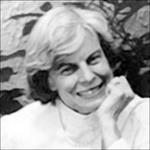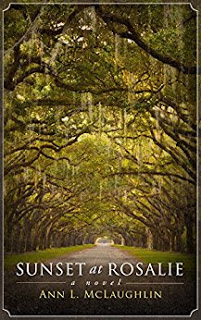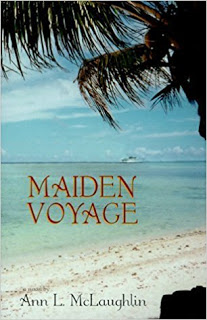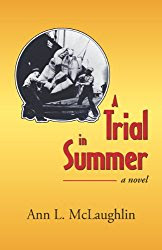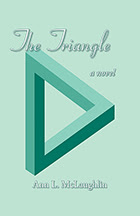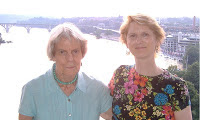
“The border between so-called ‘literary fiction’ and ‘genre fiction’ is increasingly porous, of course, but some people still resolutely read on one side of that fence and might even be dismissive of fiction on the opposite side. My ideal reader might have a foot in both camps—and since a couple of pieces here are more experimental in structure, they’d ideally be willing to venture out a bit further too.”
— Art Taylor
This blog posts on Mondays. Fourth Mondays of the month I devote to a Q & A with a fellow writer.
Most people when they think of Washington, well… there’s Washington Monument! Cue spy movie music… secret service limos streaking by…. But I lived there for a spell back when and I, I who live on Planet C.M. Mayo, found Washington to be a roaringly rich literary scene. In Washington I never lacked for events, whether for my own work or to celebrate / learn from others: book launches, poetry reading series, workshops, writers groups, book groups, conferences, book fairs… Did you know, dear writerly readers, that the Washington DC metropolitan area (which includes northern Virginia and close-in Maryland) is one of the top literary centers of the United States? And one of the most talented writers in Washington is none other than my guest for this month’s Q & A, Art Taylor. He has a new book out, and it promises to be a most excellent read. Read on!
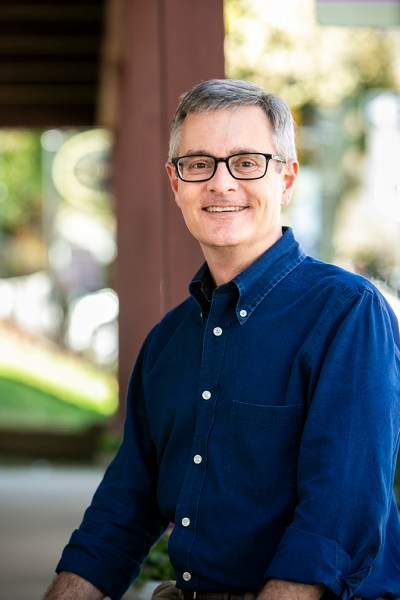

Catalog copy:
The Boy Detective & The Summer of 74 and Other Tales of Suspense features 16 stories that have collectively won an Edgar Award, two Anthony Awards (one as editor), four Agatha Awards, three Macavity Awards, and three Derringer Awards. From his first story for Ellery Queen’s Mystery Magazine in 1995 to his latest for Alfred Hitchcock’s Mystery Magazine— the title story, 25 years in the making–this collection charts the development of Art Taylor’s career so far… and turns the page toward more stories still ahead.
Official Art Taylor bio:
Art Taylor is the author of the story collection The Boy Detective & The Summer of ’74 and Other Tales of Suspense and of the novel in stories On the Road with Del & Louise, winner of the Agatha Award for Best First Novel. He won the 2019 Edgar Award for Best Short Story for “English 398: Fiction Workshop,” originally published in Ellery Queen’s Mystery Magazine, and he has won three additional Agatha Awards, an Anthony Award, three Macavity Awards, and three consecutive Derringer Awards for his short fiction. His work has also appeared in Best American Mystery Stories, and he edited Murder Under the Oaks: Bouchercon Anthology 2015, winner of the Anthony Award for Best Anthology or Collection. He is an associate professor of English at George Mason University, and he has contributed frequently to the Washington Post, the Washington Independent Review of Books, and Mystery Scene Magazine.
C.M. MAYO: What inspired you to write the stories in The Boy Detective & The Summer of 74?
ART TAYLOR: The stories in The Boy Detective & The Summer of ’74 and Other Tales of Suspense weren’t originally written with an eye toward being part of a collection; all of the stories were previously published in magazines or anthologies or online—over a period of 25 years, in fact!—so putting the collection together was more about looking back and deciding which stories seemed to stand out as important over all those years (a greatest hits?) and also which fit together well; as it turned out, many of the stories here are about relationships (romantic relationship, family relationship, friendships), about betrayals in those relationships, and about the consequences that follow. I’ll admit, it was enlightening to revisit older stories and to see how consistent some of my focus has been. I hope the collection comes together in a satisfying way for the reader too.
C.M. MAYO: If a reader were to read only one of these stories, which would you most recommend, and why?
ART TAYLOR: “The Care and Feeding of Houseplants,” originally published in Ellery Queen’s Mystery Magazine, is a story that seems to have stood out for readers and it’s also one that strikes me as representative of some of my interests and ambitions too, I guess. It’s the story of a love triangle—a husband and wife and her lover—and what turns out to be an ill-fated backyard cookout arranged by the lover, who wants the chance to strut a bit before that cuckolded husband. The story is told in alternating sections from the point of view of each main character, revealing some of their backstory, their desires and fears, their hidden selves—even while the action of the story proceeds ahead, step by (inevitable?) step.
C.M. MAYO: Which of these stories is your personal favorite, and why?
ART TAYLOR: The title story was published most recently—in the January/February 2020 issue of Alfred Hitchcock’s Mystery Magazine—but it’s one I’ve worked on for a long (long) time; I wrote the first draft of it in the mid-1990s, inspired by an incident in my own childhood in the mid-1970s—the time when some friends and I found a large animal bone in their backyard, a mystery to be solved! The story has evolved over those many years—short story, longer story, one strand of a novel, a standalone novella, etc.—and I’m both proud of what it evolved into and pleased it’s finally done and out in the world.
C.M. MAYO: As you were writing these stories did you have in mind an ideal reader? And can you describe how you see the ideal reader for these stories?
ART TAYLOR: I don’t find myself picturing a specific reader while I’m writing—I’m struggling just to figure out what I’m trying to do! But in terms of which readers might be drawn to these stories…. I write primarily in the genre of crime fiction, so I think readers of crime fiction would be my core audience, but I find myself drawing as often on what might be labeled literary fiction. The border between so-called “literary fiction” and “genre fiction” is increasingly porous, of course, but some people still resolutely read on one side of that fence and might even be dismissive of fiction on the opposite side. My ideal reader might have a foot in both camps—and since a couple of pieces here are more experimental in structure, they’d ideally be willing to venture out a bit further too.
C.M. MAYO: Can you talk about which writers have been the most important influences for you?
ART TAYLOR: Following up on the above, the short story writers I’ve learned from have been traditionally canonical—Chekhov, Hemingway, O’Connor, Welty, Joyce Carol Oates, William Trevor—as often as they’re more crime-fiction-specific: Stanley Ellin, Patricia Highsmith, Ruth Rendell, Peter Lovesey, and David Dean, just to name a few.
C.M. MAYO: Which writers are you reading now?
ART TAYLOR: Taking this one literally—with emphasis on now! I just finished Martin Edwards’ new novel Mortmain Hall—a nice mix of Golden Age Detection and contemporary noirishness. Also on my nightstand: 101 Years’ Entertainment: The Great Detective Stories, 1841-1941, edited by Ellery Queen; Simply the Best Mysteries: Edgar Award Winners and Front-runners, edited by Janet Hutchings; Fifty-two Stories, a new translation of Chekhov’s lesser-known tales; and an advance copy of my friend James McCrone’s forthcoming novel, Emergency Powers.
C.M. MAYO: How has the Digital Revolution affected your writing? Specifically, has it become more challenging to stay focused with the siren calls of email, texting, blogs, online newspapers and magazines, social media, and such? If so, do you have some tips and tricks you might be able to share?
ART TAYLOR: Yikes! Yes… Answering these questions, I’ve flipped to email, Facebook, Goodreads, the online discussion board for my class, and a couple of article in the Washington Post, plus I’ve been helping my son navigate his own online learning, which has involved Google, YouTube, and more. I wish I did have tips to avoid all that!
C.M. MAYO: Another question apropos of the Digital Revolution. At what point, if any, were you working on paper? Was working on paper necessary for you, or problematic?
ART TAYLOR: I draft and revise almost exclusively online, but I still keep a notebook for jotting down thoughts and ideas and sketching out possibilities—though I have to transfer those quickly back to the computer, because I have trouble reading my own handwriting! (That may provide a clue why I’ve written on the computer for nearly as long as I can remember—since college, in fact.)
C.M. MAYO: What is the most important piece of advice you would offer to another writer who is just starting out? And, if you could travel back in time, to your own thirty year-old self?
ART TAYLOR: Make your writing a priority for at least some portion of the day—that’s advice to aspiring writers and advice to my younger self. It’s advice I wish I could follow myself, amidst not only those “siren calls” you mentioned above but also the demands coming from so many other directions.
C.M. MAYO: What’s next for you?
ART TAYLOR: Mid-semester and mid-pandemic (mid?) I’m having trouble writing anything new. But I do have stories in two new books—“A Close Shave” in the novel in stories The Swamp Killers and “Both Sides Now,” co-written with my wife Tara Laskowski, in The Beat of Black Wings: Crime Fiction Inspired by the Songs of Joni Mitchell—and another, “All Tomorrow’s Parties,” forthcoming in the anthology Chesapeake Crimes: Invitation to Murder. I’m also editing the anthology California Schemin’, produced in conjunction with this year’s Bouchercon, the World Mystery Conference; the conference was, sadly, cancelled, but the anthology goes on!
>>Visit Art Taylor at www.arttaylorwriter.com
#

Q & A with Bruce Berger on A Desert Harvest
Q & A with Diana Anhalt on Her Poetry Collection Walking Backward
Marfa Mondays’ Shiny New Website
Find out more about C.M. Mayo’s books, shorter works, podcasts, and more at www.cmmayo.com.



